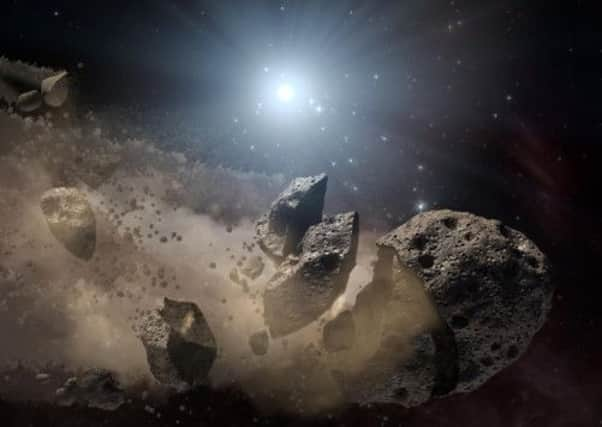Nuclear warheads ‘could destroy asteroids’


Bong Wie, director of the Asteroid Deflection Research Centre in Iowa, described the system at the International Space Development Conference in California last week, in which he explained that an anti-asteroid spacecraft would carry a nuclear warhead to destroy asteroids that were on a collision course with the planet Earth.
Wie added that the two-section spacecraft would consist of a kinetic energy impactor that would break off to blast a crater in the asteroid. The second part would carry the warhead, which would be exploded inside the crater following impact.
Advertisement
Hide AdAdvertisement
Hide AdThe ultimate aim of this would be to break the asteroid up into many different pieces, which would then follow new trajectories away from Earth - and any fragments that did reach the planet would be destroyed in the atmosphere.
Wie believes that 99 per cent of the asteroid fragments would avoid the Earth, greatly reducing the impact on our planet.
The study focuses on being able to provide a response at short notice, around 12 months or so. The plan would see two spacecraft on standby - one a reserve - that could be launched to fragment any approaching asteroids.
Wie added that, despite the politically controversial nature of sending nuclear warheads into space, safety features could be included that would prevent the weapon from detonating in case of a failure to launch.
Alternative systems mooted to divert Earth-bound asteroids included tugboats, gravity tractors, solar sails and mass drivers, all of which require between 10 and 20 years of advance warning.
Nasa has already experimented with crashing impactors into comets, and has also conducted similar experiments on the moon.
Funding for the mission would have to come from Nasa or the Department of Defense. Wie has been allocated funding for the first two phases of his work from Nasa’s Innovative Advanced Concepts (NIAC) programme, but no financial support is offered post-phase two.
The initial step would involve a $500 million flight validation mission designed to target an asteroid measuring about 50 metres in size, and although a nuclear warhead would not be required for a body of that size, Wie explained that the point would be to demonstrate an asteroid that small could be successfully targeted - something that neither of Nasa’s previous ‘impact’ experiments achieved.
The chances are that, were nuclear warheads to be used, they would be aiming at a far larger asteroid.